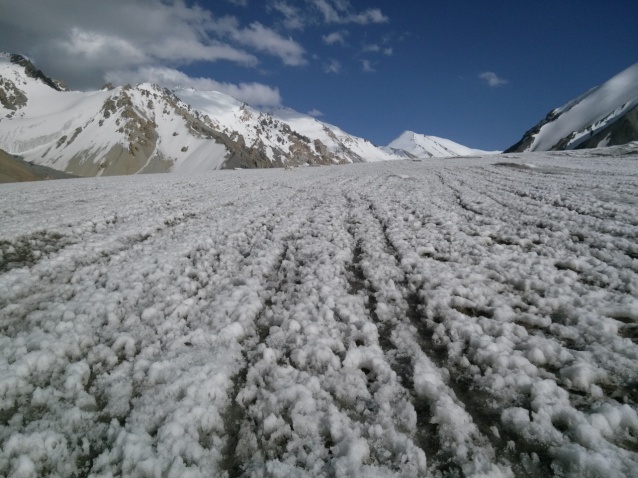Cryoconite, or dark-colored biogenic surface dust found on the glacier surface during the intensive melting season (Fig. 1), can greatly accumulate atmospheric mercury (Hg) deposition in the “Third Pole” region, according to a recent study published in Environmental Science & Technology. “This process could have very important implications for biogeochemical Hg cycling in the cryosphere” said Dr. HUANG Jie, a research scientist from the Institute of Tibetan Plateau Research, Chinese Academy of Sciences (CAS).
Westerlies and Indian monsoon can carry atmospheric Hg pollutants from the surrounding emission sources such as the south Asia and central Asia to the Third Pole region. Cryoconite is a granular aggregate on glacier surface during the melting season, and known to accumulate atmospheric Hg contaminants. Cryoconite samples from seven high-elevation glaciers in the Third Pole (Fig. 2) were collected to investigate the spatial and altitudinal patterns of atmospheric Hg accumulation in the cryoconite. Unexpectedly high accumulation of MeHg was detected in the cryoconite samples, revealing the surface of cryoconite could act as a potential site for Hg methylation in cryospheric environments. This study also indicates that a significant amount of HgT and MeHg can be formed during a single year of formation process in the glacier cryoconite. The estimates of annual amount of total Hg stored in cryoconite can even account for more than 50% of Hg release amount from glacier melting, suggesting that glacier cryoconite could play a very important role in Hg storage and transformation. More extensive recession of glaciers over Western China has become inevitable in the foreseeable future, which may result in downstream effects on glacier-fed ecosystems under climate warming scenario. Therefore, further studies are needed to better and fully understand the implications of cryoconite Hg for biogeochemical Hg cycling in the regional and global cryosphere. (Reported by HUANG Jie)

Fig.1 Dark-colored cryoconite granules on glacier surface during the ablation season

Fig.2 Field sampling of cryoconite on the glacier surface
Dr. HUANG Jie is the lead author of the study “Accumulation of Atmospheric Mercury in Glacier Cryoconite over Western China”. The research was supported by the Strategic Priority Research Program (PAN-TPE) of the Chinese Academy of Sciences and National Natural Science Foundation of China.
DOI: 10.1021/acs.est.8b06575
Full-text available at https://pubs.acs.org/doi/full/10.1021/acs.est.8b06575


